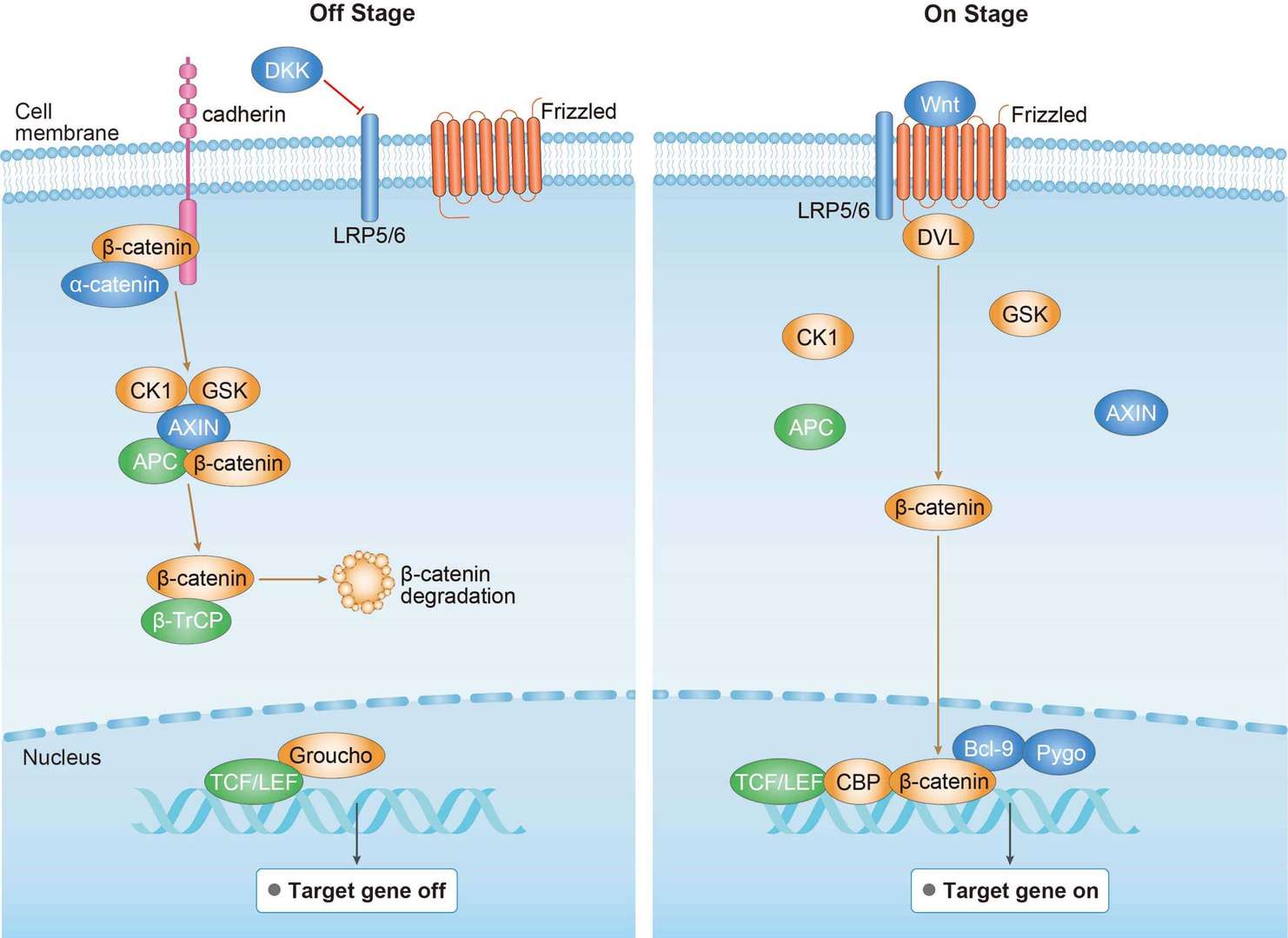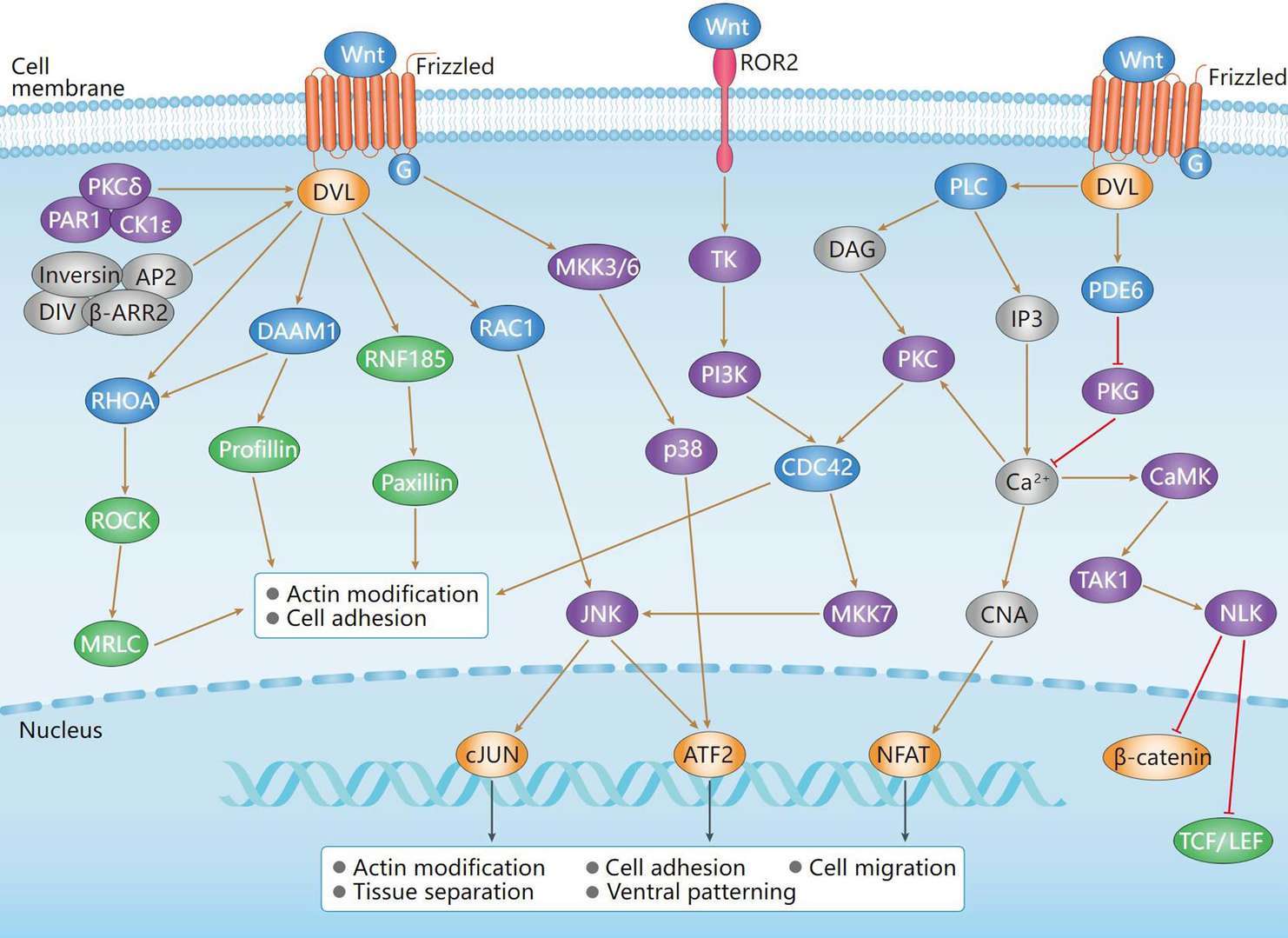Anti-Human DKK1 Recombinant Antibody (huMabJC18)
CAT#: TAB-193MZ
This antibody that binds to Dkk-1 can be potentially used for treating diseases, conditions and disorders, such as bone disorders, which result in a loss of bone.








Specifications
- Host Species
- Human
- Type
- Humanized antibody
- Specificity
- Human
- Clone
- huMabJC18
- Applications
- ELISA, FuncS
- Related Disease
- Bone disorders such as a loss of bone mass
Applications
- Application Notes
- The antibody was validated for Function Assay. For details, refer to Published Data.
Target
Customer Review
There are currently no Customer reviews or questions for TAB-193MZ. Click the button above to contact us or submit your feedback about this product.
Submit Your Publication
Published with our product? Submit your paper and receive a 10% discount on your next order! Share your research to earn exclusive rewards.
Related Signaling Pathways
Downloadable Resources
Download resources about recombinant antibody development and antibody engineering to boost your research.
Product Notes
This is a product of Creative Biolabs' Hi-Affi™ recombinant antibody portfolio, which has several benefits including:
• Increased sensitivity
• Confirmed specificity
• High repeatability
• Excellent batch-to-batch consistency
• Sustainable supply
• Animal-free production
See more details about Hi-Affi™ recombinant antibody benefits.
Datasheet
MSDS
COA
Certificate of Analysis LookupTo download a Certificate of Analysis, please enter a lot number in the search box below. Note: Certificate of Analysis not available for kit components.
See other products for "Clone huMabJC18"
- CAT
- Product Name
See other products for "DKK1"
Select a product category from the dropdown menu below to view related products.
| CAT | Product Name | Application | Type |
|---|---|---|---|
| TAB-192MZ | Anti-Mouse DKK1 Recombinant Antibody (JC18) | ELISA, FuncS | |
| TAB-194MZ | Mouse Anti-DKK1 Recombinant Antibody (TAB-194MZ) | ELISA | Mouse IgG |
| TAB-192MZ-F(E) | Anti-Mouse DKK1 Recombinant Antibody Fab Fragment (JC18) | ELISA | |
| TAB-194MZ-F(E) | Mouse Anti-DKK1 Recombinant Antibody; Fab Fragment (TAB-194MZ-F(E)) | ELISA | Mouse Fab |
| TAB-196MZ-F(E) | Rat Anti-DKK1 Recombinant Antibody; Fab Fragment (TAB-196MZ-F(E)) | ELISA | Rat Fab |
| CAT | Product Name | Application | Type |
|---|---|---|---|
| TAB-193MZ-S(P) | Anti-Human DKK1 Recombinant Antibody scFv Fragment (huMabJC18) | ELISA | Humanized antibody |
| TAB-193MZ-F(E) | Anti-Human DKK1 Recombinant Antibody Fab Fragment (huMabJC18) | ELISA | Humanized antibody |
| CAT | Product Name | Application | Type |
|---|---|---|---|
| TAB-195MZ-F(E) | Human Anti-DKK1 Recombinant Antibody; Fab Fragment (TAB-195MZ-F(E)) | In vivo efficacy assay | Human Fab |
| TAB-197MZ-F(E) | Anti-Human DKK1 Recombinant Antibody Fab Fragment (RH1-10) | WB | Human antibody |
| TAB-198MZ-F(E) | Anti-Human DKK1 Recombinant Antibody Fab Fragment (RH2-18) | WB | Human antibody |
| TAB-199MZ-F(E) | Anti-Human DKK1 Recombinant Antibody Fab Fragment (RH2-31) | WB | Human antibody |
| TAB-200MZ-F(E) | Anti-Human DKK1 Recombinant Antibody Fab Fragment (RH2-59) | WB | Human antibody |
| CAT | Product Name | Application | Type |
|---|---|---|---|
| TAB-010MZ-VHH | Anti-Human DKK1 Recombinant Antibody (TAB-010MZ-VHH) | ELISA | Single domain antibody |
| TAB-011MZ-VHH | Anti-Human DKK1 Recombinant Antibody (TAB-011MZ-VHH) | ELISA | Single domain antibody |
| TAB-012MZ-VHH | Anti-Human DKK1 Recombinant Antibody (TAB-012MZ-VHH) | ELISA | Single domain antibody |
| TAB-013MZ-VHH | Anti-Human DKK1 Recombinant Antibody (TAB-013MZ-VHH) | ELISA | Single domain antibody |
| HPAB-1510-FY | Llama Anti-DKK1 Recombinant Antibody (HPAB-1510-FY) | ELISA | Llama VHH |
| CAT | Product Name | Application | Type |
|---|---|---|---|
| NEUT-703CQ | Rabbit Anti-DKK1 Recombinant Antibody (clone CBL1003) | Neut | Rabbit IgG |
| CAT | Product Name | Application | Type |
|---|---|---|---|
| MOR-0991 | Hi-Affi™ Rabbit Anti-DKK1 Recombinant Antibody (clone DS991AB) | FC, ICC, IF, IHC-P, WB | Rabbit IgG |
| MOR-4137 | Hi-Affi™ Rabbit Anti-DKK1 Recombinant Antibody (clone SI210DS) | Neut | Rabbit IgG |
| CAT | Product Name | Application | Type |
|---|---|---|---|
| HPAB-0278-YC-S(P) | Human Anti-DKK1 Recombinant Antibody; scFv Fragment (HPAB-0278-YC-S(P)) | ELISA, Block, FuncS | Human scFv |
| HPAB-0279-YC-S(P) | Human Anti-DKK1 Recombinant Antibody; scFv Fragment (HPAB-0279-YC-S(P)) | Block, FuncS | Human scFv |
| HPAB-0280-YC-S(P) | Human Anti-DKK1 Recombinant Antibody; scFv Fragment (HPAB-0280-YC-S(P)) | ELISA | Human scFv |
| HPAB-670-FY-S(P) | Human Anti-DKK1 Recombinant Antibody; scFv Fragment (HPAB-670-FY-S(P)) | ELISA | Human scFv |
| HPAB-0757-FY-F(E) | Mouse Anti-DKK1 Recombinant Antibody; Fab Fragment (HPAB-0757-FY-F(E)) | ELISA | Mouse Fab |
| CAT | Product Name | Application | Type |
|---|---|---|---|
| HPAB-0278-YC-F(E) | Human Anti-DKK1 Recombinant Antibody; Fab Fragment (HPAB-0278-YC-F(E)) | ELISA, Block, FuncS | Human Fab |
| HPAB-0096-FY-F(E) | Human Anti-DKK1 Recombinant Antibody; Fab Fragment (HPAB-0096-FY-F(E)) | FuncS | Human Fab |
| HPAB-0107-FY-F(E) | Human Anti-DKK1 Recombinant Antibody; Fab Fragment (HPAB-0107-FY-F(E)) | FuncS | Human Fab |
| HPAB-0760-FY-S(P) | Mouse Anti-DKK1 Recombinant Antibody; scFv Fragment (HPAB-0760-FY-S(P)) | ELISA | Mouse scFv |
| HPAB-0761-FY-S(P) | Mouse Anti-DKK1 Recombinant Antibody; scFv Fragment (HPAB-0761-FY-S(P)) | ELISA | Mouse scFv |
| CAT | Product Name | Application | Type |
|---|---|---|---|
| ZG-0479F | Mouse Anti-DKK1 Recombinant Antibody (ZG-0479F) | WB, ELISA | Mouse IgG |
| VS3-CJ185 | Rabbit Anti-DKK1 Recombinant Antibody (VS3-CJ185) | WB, ICC, IF, IHC, FC | Rabbit IgG |
| VS3-XY579 | Mouse Anti-DKK1 Recombinant Antibody (clone 2H2) | ELISA, WB | Mouse IgG2b |
| VS3-XY3332 | Rabbit Anti-DKK1 Recombinant Antibody (clone R07-6J6) | WB, IHC-P, ICC, IF, FC | Rabbit IgG |
| VS7-HM817 | Mouse Anti-DKK1 Recombinant Antibody (clone CBL196HM) | WB, ELISA | Mouse IgG |
| CAT | Product Name | Application | Type |
|---|---|---|---|
| VS-0525-XY2001 | Anti-DKK1 Immunohistochemistry Kit | IHC | |
| VS-0525-XY2002 | Anti-Mouse DKK1 Immunohistochemistry Kit | IHC | |
| VS-0525-XY2003 | Anti-Human DKK1 Immunohistochemistry Kit | IHC |
| CAT | Product Name | Application | Type |
|---|---|---|---|
| VS-0525-YC46 | Recombinant Anti-DKK1 Biparatopic Antibody, Tandem scFv (Clone RH2-31 x Clone RH2-80) | Inhib | Tandem scFv |
| CAT | Product Name | Application | Type |
|---|---|---|---|
| VS-0625-YC89 | Recombinant Anti-DKK1 Eliminating Antibody, pH-Sensitive (VS-0625-YC89) | Antigen-Sweeping In Vivo. | Human IgG |
Popular Products

Application: IP, IF, FuncS, FC, Neut, ELISA, IHC

Application: ELISA, FC, IP, FuncS, IF, Neut, ICC

Application: FuncS, IF, Neut, ELISA, FC, IP, IHC

Application: FC, IP, ELISA, Neut, FuncS, IF, WB

Application: IF, IP, Neut, FuncS, ELISA, FC, ICC

Application: FC, IP, ELISA, Neut, FuncS, IF, IHC

Application: Neut, ELISA, Inhib, ICC, WB

Application: WB, ELISA, FC, IHC, IP

Application: FC, IHC-Fr, IP, ELISA, Block

Application: WB, ELISA, FC, IHC, IF, IP

Application: ELISA, Neut
For research use only. Not intended for any clinical use. No products from Creative Biolabs may be resold, modified for resale or used to manufacture commercial products without prior written approval from Creative Biolabs.
This site is protected by reCAPTCHA and the Google Privacy Policy and Terms of Service apply.











 Canonical Wnt Signaling Pathway
Canonical Wnt Signaling Pathway
 Non-Canonical Wnt Signaling Pathway
Non-Canonical Wnt Signaling Pathway













